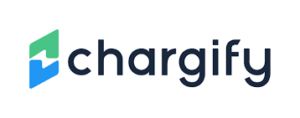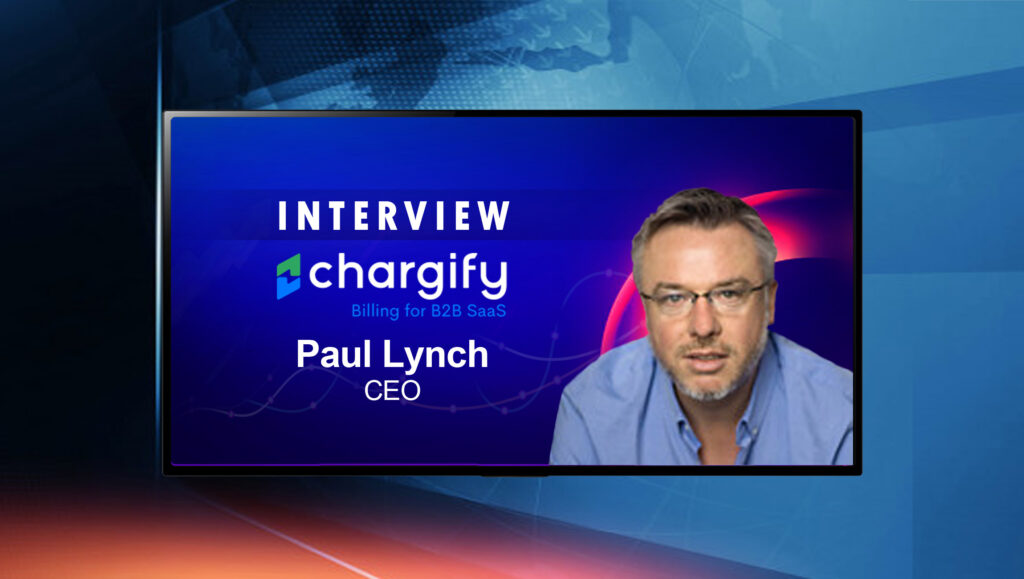Billing data can be a powerful source of crucial customer and business intelligence, Paul Lynch, CEO at Chargify shares a few thoughts on its impact on sales and marketing and why more sales and marketing leaders should use this to drive customer insights. Read More: Qumulo Announces Native Support for Amazon Nimble Studio ______ I’ve always been very passionate about business development and growth acceleration and this is where I have excelled throughout the years – particularly as I’ve carved out a career in the telecoms and software-as-a-service (SaaS) markets. One of the reasons I was so excited about the opportunity to join Chargify when it arose for me in 2019 was that I felt there’s been an egregious lack of innovation in the subscription billing market which has left it ripe to be disrupted. Our focus at Chargify is offering innovative tools and billing solutions that aren’t in the market at the moment to drive growth for our customers. If you’re a B2B SaaS company in the area of complex billing and subscription management then Chargify is the company that can help you do it. The perfect example of this was the recent launch of our new Chargify Business Intelligence tool in early May. After listening to the needs of our customers we realized there was a serious gap in the market around billing analytics tools. When you look at every other billing platform their analytics are all very prescriptive and they’re telling customers what metrics they think they should look at. With Chargify Business Intelligence, we’ve given our customers the control to analyze the specific analytics they know will be most beneficial to grow their unique business. Users can create custom dashboards with real-time billing and revenue management data and even stream-in third party metrics to analyze against their billing data – something that’s been unheard of prior to this. Our goal here was to provide B2B SaaS companies with an accurate view of their business so that they can make data-informed strategic decisions. First and foremost, consumers are more discerning today than they’ve ever been. They’re being hit by more channels in terms of marketing and advertising on a day-to-day basis so they want and demand real value. If you don’t deliver value to today’s consumers, they aren’t going to maintain business with you for a long period of time. So what we’re starting to see in the industry is a shift away from the traditional subscription-based model where you pay for what you deploy with a set monthly charge into a truly value-led pricing model where the customers pay for exactly what they use. This is the big shift happening in SaaS right now. Kyle Poyar recently wrote an excellent article for TechCrunch that said 7 of the 11 last successful IPOs were businesses who did NOT have a predictable revenue model – they were 100% usage based. Everyone is moving in this direction. Next, billing is no longer an issue for just one person at the company. It’s a cross functional issue and the market is beginning to wake up to that. So what we’re starting to see is companies of all sizes and at all points of their evolution looking to solve their billing pain and better leverage their billing data to make informed business decisions. In particular, billing data can contain a wealth of insights for sales and marketing teams that you shouldn’t overlook. Finally, COVID has created an awful lot of change within the market. Buying cycles have changed, customer perceptions have changed, and the businesses that have been succeeding throughout COVID are those that are adapting to the customers’ needs. A big thing I’ve noticed throughout the pandemic is a shift with B2B SaaS companies aligning more to B2C type sales processes with ecommerce based offerings. With everyone shut inside, subscription ecommerce has become the next big thing and I don’t see this going away anytime soon even as we start returning to a bit of normalcy. Data is prevalent and growing exponentially, but you have to be able to use and analyze it in real-time to make strategic business decisions as things are happening. At the end of the day you have to understand what your customers are doing so that you as a salesperson or marketer can better understand how you’re bundling your product, pricing your product, and then billing on that for your customers. Billing data is powerful because it allows you to really look at your customer base and determine what areas of your product they’re using, where they’re finding value, and even what they don’t like about your product. You can use this insight to identify and attract the ideal customer, better position yourself in your market, and also drive your product roadmap to make your product more aligned with what your customers want. When you know all these things, then you can price strategically on that information. We recognize how important it is for sales and marketing to have access to billing data which is why Chargify Business Intelligence offers out-of-the-box dashboards tagged specifically for sales and marketing users that provides them with a set of core metrics relevant to their role. For example, salespeople can understand how they are contributing to new and up-sell revenue by tracking metrics like New Business and Expansion MRR Growth by sales representatives and ARPU. First, your organization needs to define a reporting framework that makes sense with the way your business measures success and then you need to find yourself a tool that is able to align with your framework. Business intelligence tools can be incredibly flexible and configured to support however you want to report. Having these top-level insights is a great starting point, but to really extract meaningful insights you need to be able to go deeper and identify patterns. Your billing and subscription management tool is a treasure trove of data about your business and how your customers consume your product. Unfortunately, a lot of the subscription management offerings on the market only provide standard out-of-the-box analytics that scratch the surface but don’t provide the insight companies need to really understand what’s going on with their business. This is a pain point we wanted to solve. With Chargify Business Intelligence in particular, users have the ability to filter and group on numerous properties (e.g. geographic region, product and subscription information) and look at different cuts of the data. This allows them to identify underperforming segments and create a data-backed mitigation strategy. On the other hand, you can also draw insights from what you are doing well and work to reproduce this success across other segments. Being able to manipulate this data how you want to look at it, rather than how it’s being presented to you, is very important if you want to determine where you’re winning and where you’re losing. The SaaS industry is becoming increasingly data-driven and business intelligence tools are providing a new way for businesses to look at and analyze their data. Take pricing for example – a study from ProfitWell found that companies only spend six hours evaluating their pricing even though pricing is the one of the best growth levers for SaaS and can exponentially impact growth rate. Business leaders just don’t have the time, desire, or tools to figure it out and optimize pricing. Now imagine if you could take your historical revenue and run scenarios to see if you had priced in different ways what your revenue would have been and then make pricing decisions based on data backed results and track against that in real time. This type of predictive pricing capability is something that I can see happening as we continue to evolve the Chargify Business Intelligence platform specifically and will be a powerful growth tool for companies. Another thing I can see with the next evolution of Chargify Business Intelligence and platforms like it is the ability for users to not only consume their data internally, but to also embed analytics into their platform and provide that functionality to their own end user. For example, imagine a SaaS company that has an Events-Based Billing model that could share detailed usage information and data in real-time with their end customer. This is the type of transparency today’s consumers are demanding. Sales and marketing are a little bit of a science and a little bit of an art. It’s important that the decisions you’re making are backed by data and that you follow through with tracking your KPIs to measure that success. For example, don’t underestimate the insights that your billing data holds for understanding your customers and what they want and how to best market and sell to them. Make sure that your CRM and your billing system are integrated so that the campaigns your leads come in on will be tied to the revenue that they’re driving. Here at Chargify, Hubspot is tied to Salesforce and then we actually tie that data into Chargify’s native platform. This allows our marketing and sales teams to track what types of customers are responding to what types of marketing activities, link them to what they’re buying, and then follow them through their customer journey to see how they use the product and what they say about our product in NPS. I can’t stress enough how important it is that you make your customers the hero because they are the ones who are important. You need to develop and evolve your product to support what your customers are requiring from you. Use the data that your system holds in order to identify those customers and listen to what they’re wanting from you. Businesses in ever-changing and evolving markets, like SaaS, need to be adaptable to change, and that change is going to be driven by what their customers demand. Your customers will always tell you what they want – you just need to open your ears and listen. That may sound extremely simplistic but I’ve seen so many businesses that don’t listen to their customers, they don’t ask for their opinion, and they have this concept that they know better than the customer and ultimately they’re not successful. Finally, marketing and sales should remember that pricing is not a “set-it and forget-it” exercise. You should constantly be looking at your pricing to ensure it’s relevant and truly providing value to your customers and attracting the right type of customer for your business. Read More: SalesTechStar Interview With Michael Schwalb, GM Of Partnerships And Data At JW Player Chargify is a subscription billing and revenue management platform built specifically for fast-growing B2B SaaS businesses. Founded in 2009, Chargify started out as a team within Grasshopper focused on the core needs of recurring billing. Over the past decade, Chargify has expanded its offerings to address the complexities of SaaS revenue management, with core functionalities in elastic billing, revenue operations, Events-Based Billing, and SaaS-tailored insights. The company now processes nearly $2B through its platform annually and has headquarters in San Antonio, Texas and Dublin, Ireland. Paul Lynch is the CEO at Chargify.Hi Paul, we’d love to hear about your journey through the years…tell us more about Chargify and its newest tool?
How are you seeing new trends and technologies impact the functioning of subscription businesses, what are some predictions you have for the near-future?
What are some top ways in which you feel marketers and salespeople should use billing data to draw relevant insights on customers?
When it comes to deriving actionable business intelligence today, what are best practices that you feel teams need to be following to be able to use this to impact business growth?
How do you feel platforms such as this will evolve in future and what will drive demand for more innovations and what kind?
A few thoughts on what you feel today’s sales and marketing leaders need to do differently to help them create a better buying experience?

Customer Success Tips for Sales! Catch more from the latest episodes of The SalesStar Podcast!





















